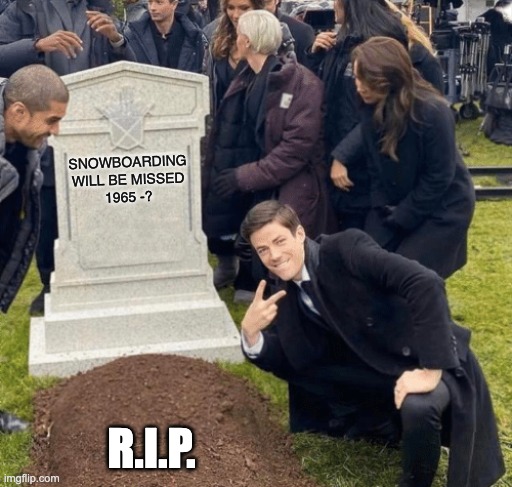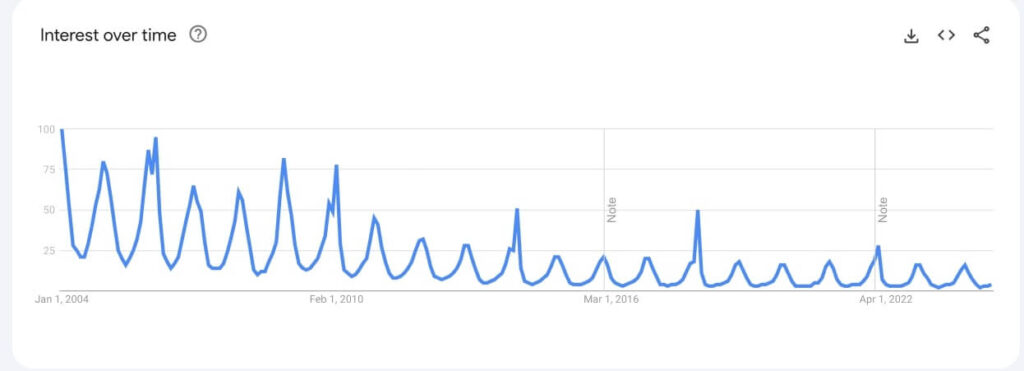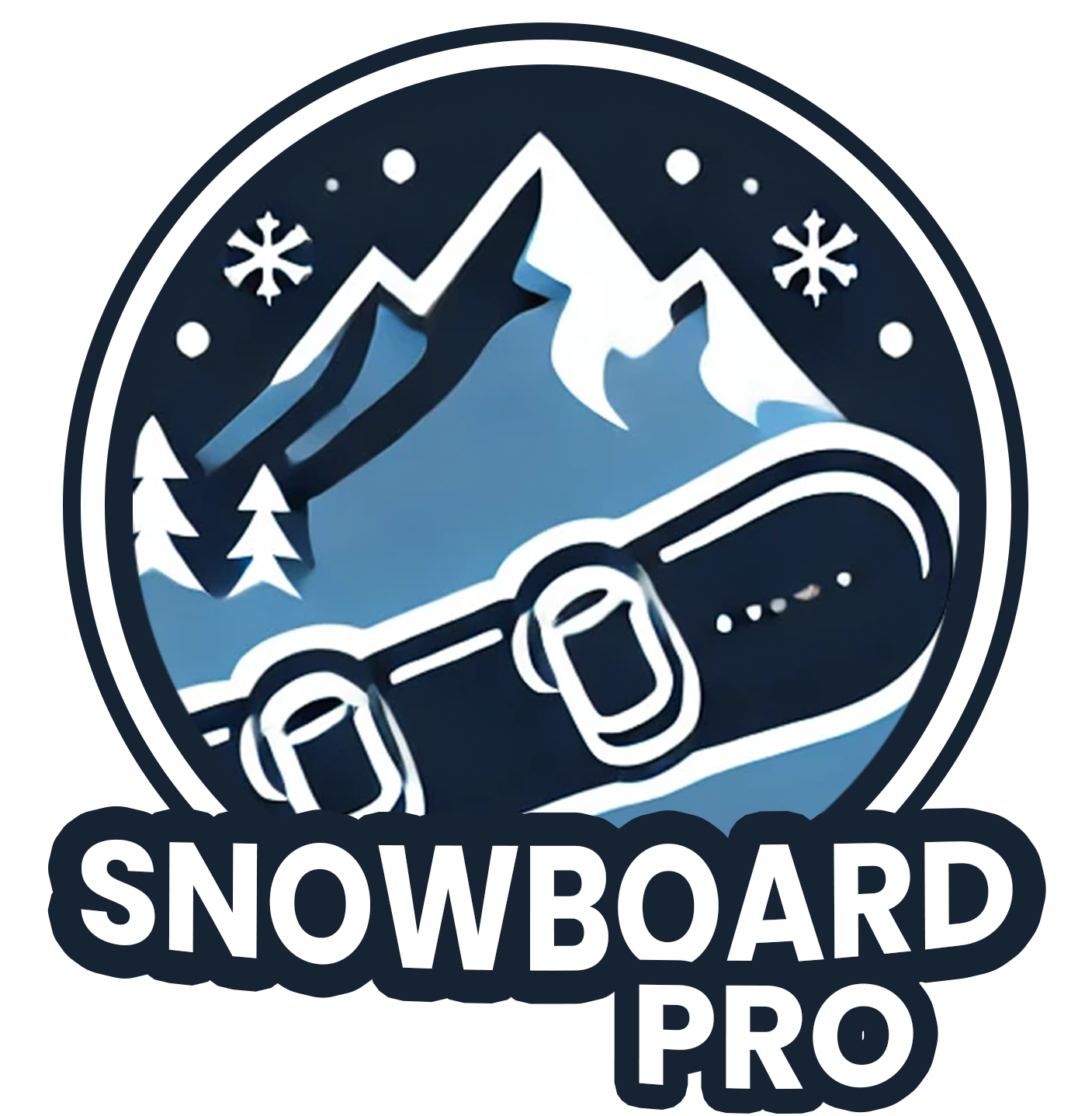Death to Snowboards? The Declining Popularity of Snowboarding

Snowboarding emerged in the 1980s as a revolutionary sport that combined elements of surfing, skateboarding, and skiing. Its rise to fame in the 1990s and 2000s transformed it from a niche activity into a mainstream winter sport.
However, recent trends indicate a decline in its popularity.
This article delves into the history, current status, and future outlook of snowboarding, exploring factors such as audience demographics, global warming, and shifting trends in winter sports.
History of Snowboarding
Snowboarding traces its origins to Sherman Poppen’s invention of the “Snurfer” in 1965, a precursor to the modern snowboard. In the 1980s, pioneers like Jake Burton Carpenter and Tom Sims refined the design and introduced the sport to a broader audience. Snowboarding’s official recognition as a sport came in 1994 with the first Winter X Games and its inclusion in the 1998 Winter Olympics.
By the early 2000s, snowboarding had reached its peak. The 2001-2002 season saw 8.2 million participants in the U.S., and snowboard sales hit their zenith in 2008. This era marked the height of snowboarding’s popularity, characterized by explosive growth in media coverage and the establishment of iconic snowboarding culture.
Let’s explore further to understand the decline of this amazing activity.
Decline of Snowboarding Era
Participation Rates
The early 2010s saw a noticeable decline in snowboarding participation. According to industry data, the number of snowboarders in the U.S. dropped from 8.2 million in 2001-2002 to approximately 5.8 million in the 2023-2024 season.
Snowboard sales also experienced a significant downturn, with sales plummeting by around 39% by 2023 from their 2008 highs.
A 2024 report from SnowboardPRO and the International Snowboarding Association (ISA), based on interviews with over 450 snowboarders worldwide, highlights these trends. “The enthusiasm for snowboarding has waned, partly due to the increasing costs and shifting interests towards skiing and other activities,” notes Emily Carter, 34, a professional snowboard instructor from Aspen, Colorado.
Google Trends Analysis
Google Trends data indicates a substantial decrease in online interest related to snowboarding. The search term “snowboarding” has seen an 80% drop in searches over the last 20 years.
More strikingly, searches for “snowboarding lessons” and “buy snowboard” have decreased by over 90% since 2004, reflecting a significant decline in the number of people interested in learning to snowboard.

Snowboarding - Sport or Culture?
The Cultural Phenomenon
Snowboarding initially emerged as a subculture driven by the countercultural ethos of the 1980s and 1990s. It represented a break from traditional skiing, appealing to a younger, rebellious demographic.
Iconic brands like Burton and forums like Transworld Snowboarding played pivotal roles in shaping snowboarding’s cultural identity.
The sport’s culture was characterized by its emphasis on individual style, creativity, and an anti-establishment attitude. The emergence of snowboarding films, magazines, and a distinct fashion trend, including baggy pants and oversized jackets, underscored its cultural impact.
Transition to Mainstream Sport
Over the years, snowboarding transitioned from a niche cultural activity to a widely recognized sport. This shift was facilitated by its inclusion in the Olympics and the proliferation of snowboarding competitions and professional tours. However, as the sport gained mainstream acceptance, some of its original cultural essence diluted, with a growing focus on performance and competition.
This transformation has also influenced the demographic trends, with an older audience now predominant. Snowboarding’s evolution from a countercultural activity to a mainstream sport has led to a more commercialized approach, impacting its appeal among younger enthusiasts.
Changing Demographics
The average age of snowboarders has increased from the late 20s to nearly 34 years old in recent years.
Many of the sport’s early enthusiasts are now transitioning to skiing or other activities. This shift has impacted the vibrancy and appeal of snowboarding as a cultural force among younger generations.
Snowboarding Vs. Skiing
Shift in Preferences
Skiing has seen a resurgence in popularity compared to snowboarding.
According to the National Ski Areas Association (NSAA), skier visits in U.S. resorts reached a record 64.7 million during the 2022-2023 season, while snowboarding participation continued to decline. This trend reflects broader changes in preference, with skiing being perceived as more versatile and easier to pick up, particularly among older enthusiasts.
Resort Dynamics
Certain ski resorts have adjusted their policies to accommodate these changing preferences. Notably, some resorts have even banned snowboarding. For instance, Mad River Glen in Vermont and a resort in Park City, Utah are among the few U.S. resorts that do not allow snowboarders. These decisions often stem from safety concerns, snow quality issues, and traditionalist sentiments.
Global Warming Effect on the Snowboard Industry

Impact on Snow Supply
Global warming poses a significant threat to ski resorts worldwide. A 2023 report published in Nature Climate Change reveals that 53% of European ski resorts are at high risk of reduced snow supply if global temperatures rise by 2°C, and 98% are at risk with a 4°C increase. This situation exacerbates the challenges faced by snowboarding and skiing resorts alike.
Resort Closures
The effects of climate change are already evident. For example, the Chacaltaya ski area in Bolivia, once the world’s highest, closed in 2009 due to glacier melting.
Similarly, ski resorts in the French Alps, such as Abondance, have ceased operations due to insufficient snow. Larger resorts like Aspen and Park City in the U.S. are also preparing for more frequent and severe snow deficits.
Industry Responses
In response, some resorts are investing in snowmaking technology and renewable energy sources.
For instance, Mammoth Mountain in California has reduced its energy consumption significantly and implemented solar panels to combat its environmental footprint.
However, these measures are seen as temporary solutions, and the long-term viability of winter sports remains uncertain.

Snowboarding Statistics
Participation and Costs
As of 2024, there are approximately 6.56 million snowboarders in the U.S. The average cost for a snowboard lesson ranges between $50 and $150 per hour.
Snowboarders typically spend about $927 annually on equipment and lift tickets.
Despite these costs, the average snowboarding session lasts about two hours, with riders taking approximately seven runs per day.
Equipment and Trends
The average snowboarder is around 28.4 years old, and 32% of snowboarders are female. Interestingly, the average snowboarder can burn between 250 and 630 calories per hour, reflecting the physical demands of the sport.
Best Snowboarding Resorts
Top Global Destinations
Some of the best snowboarding resorts globally include:
- Davos, Switzerland: Known for its extensive terrain and high altitude.
- Verbier, Switzerland: Offers challenging slopes and vibrant après-ski.
- Revelstoke, Canada: Renowned for its deep powder and backcountry options.
- Mammoth Mountain, USA: Famous for its expansive parks and consistent snowfall.
Notable Resorts in Canada
In Canada:
Snowboarding vs. Other Extreme Sports
Rise of Other Extreme Sports
As snowboarding faces challenges, other extreme sports have gained popularity.
Activities such as mountain biking, skateboarding, and parkour have seen significant growth.
For instance, mountain biking has grown in popularity due to its accessibility and the availability of dedicated trails and parks.
According to a report by the Outdoor Foundation, mountain biking saw a 6% increase in participation between 2019 and 2022, reaching over 8 million participants in the U.S. Skateboarding also experienced a resurgence, partly fueled by its inclusion in the Tokyo 2020 Olympics and Paris 2024 Olympics.
Possible Reasons For the Drop
The rise of extreme sports can be attributed to their versatility and lower entry costs compared to snowboarding.
For example, skateboarding requires minimal equipment and can be practiced in urban environments, making it accessible to a wider audience.
Snowboarding lift tickets become more expensive each year. Some American resorts regularly charge more than $200 USD/day.
Equipment prices have also increased due to supply chain stress and rising labor costs.
Similarly, parkour, which involves navigating obstacles in urban settings, has gained traction due to its emphasis on physical fitness and creativity.
Statistics:
- Mountain Biking: The number of participants in mountain biking grew by 6% from 2019 to 2022, with over 8 million participants in the U.S.
- Skateboarding: Participation in skateboarding increased by 5% in 2021, reaching approximately 6.2 million active skaters in the U.S.
- Parkour: The global parkour community has seen a rise in enthusiasts, with over 1 million participants worldwide as of 2023.
Encouraging Future Participation
While the current trends indicate challenges for the snowboarding industry, there is still potential for revitalization. Promoting snowboarding among younger generations and highlighting its unique aspects can reinvigorate interest. Snowboarding enthusiasts and industry stakeholders must work together to address these challenges and foster a new wave of riders.
Industry Innovations
The industry can also explore innovations in equipment and training to lower barriers to entry. Enhanced snowboarding experiences, such as virtual reality simulations and interactive learning tools, could attract new participants and sustain interest.
Snowboarding, once a vibrant and rapidly growing sport, faces significant challenges in the modern era.
While participation rates have declined and global warming threatens winter sports infrastructure, the sport’s unique appeal and cultural significance offer hope for its revival.
By addressing these challenges and fostering a renewed enthusiasm for snowboarding, enthusiasts and industry leaders can work to ensure its continued presence in the winter sports landscape.
We are rooting for you, Snowboarding.
SnowboardPRO, 2025.
